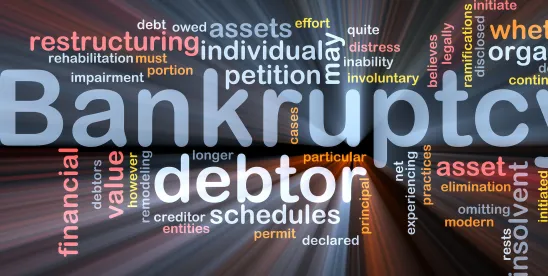On June 27, 2024, the Supreme Court ruled in a 5-4 decision that a bankruptcy court does not have the statutory authority to discharge creditors’ claims against a non-debtor without the creditors’ consent (except in asbestos cases). The decision in Harrington v. Purdue Pharma settles a long-standing dispute in the bankruptcy world that will have significant impact on Purdue Pharma and its hundreds of thousands of creditors, and more generally on the bankruptcy practice itself.
The non-consensual third-party releases in the Purdue case stem from a desire of the Sackler family (the “Sacklers”) to avoid civil lawsuits arising from their ownership and control of Purdue and the company’s deceptive marketing practices of OxyContin. In 2007, a Purdue affiliate pled guilty to a federal felony for misbranding OxyContin as less addictive than other opioids and less subject to abuse. After the plea agreement, the Sacklers began taking as much as 70% of Purdue’s yearly revenues, with the family’s distributions between 2008 and 2016 totaling approximately $11 billion. Much of these funds were diverted to overseas trusts and family-owned businesses.
Purdue and its affiliates filed Chapter 11 petitions on September 16, 2019. The Sacklers originally proposed to return $4.325 billion of the $11 billion they had withdrawn from the company in exchange for (a) an order extinguishing any claims that the estate may have against family members, including fraudulent transfer claims, and (b) a release and injunction to bar opioid-related claims from being brought against them, including claims for fraud and willful misconduct. Purdue agreed to these terms and included them in its plan of reorganization plan. The bankruptcy court confirmed the plan over the objection of thousands of creditors, including eight States, the District of Columbia, the city of Seattle and various Canadian municipalities and Tribes, but the district court vacated the decision, holding that the bankruptcy court did not have authority to extinguish claims against the Sacklers without the consent of the opioid victims who had brought, or who could subsequently bring, the claims.
Following this ruling, the Sacklers agreed to contribute up to an additional $1.675 billion, and the States and District of Columbia agreed to drop their objections to the plan. The Second Circuit ultimately reversed the district court and revived the bankruptcy court’s order confirming the now-modified plan. The U.S. Trustee filed an application with the Supreme Court to stay the Second Circuit’s decision, which the Supreme Court granted, and the Supreme Court granted a writ of certiorari to resolve the split among the circuits as to the authority of a bankruptcy court to approve nonconsensual third-party releases.
The majority began its legal analysis by looking to section 1123(b) of the Bankruptcy Code, which governs what may be included in a plan. Specifically, the majority focused on the catch-all provision contained in section 1123(b)(6) which provides that a chapter 11 plan may “include any other appropriate provision not inconsistent with the applicable provisions of this title.” The majority found that reading section 1123(b)(6)’s catch-all provision to authorize non-consensual third-party releases would be a radically different power than the other powers enumerated in section 1123(b)(1)-(5), all of which concern the rights and responsibilities of the debtor. Relying on the statutory canon of construction ejusdem generis, under which a catch-all provision must be read in light of its surrounding provisions, the majority rejected the argument that section 1123(b)(6) authorized the bankruptcy court to approve nonconsensual third-party releases.
The majority found three additional reasons, beyond the statutory construction concerns discussed above, why section 1123(b)(6) cannot provide authority to approve the releases. First, the plan proponents’ reading of section 1123(b)(6) would provide a non-debtor (i.e., the Sacklers) with a discharge, which is usually reserved for the debtor alone. Second, the release would afford the Sacklers with a discharge of non-dischargeable claims (e.g., claims for willful and malicious injury) without the Sacklers agreeing to pay anything approaching the full amount of their assets (which assets, it bears noting, were pilfered from the company). Third, the Bankruptcy Code provides for nonconsensual third-party releases, but only in the context of asbestos cases, see 11 U.S.C. § 524(g), thus making it difficult to justify reading section 1123(b)(6) to provide for nonconsensual third-party releases in every context. According to the majority, a policy change allowing for nonconsensual third-party releases is a matter for Congress and not the court.
For all of these reasons, the majority held that the Bankruptcy Code “does not authorize a release and injunction that, as part of a plan of reorganization under Chapter 11, effectively seeks to discharge claims against a nondebtor without the consent of affected claimants.” Despite this seemingly broad ruling, the majority made clear that its ruling should not be construed to call into question consensual third-party releases. Furthermore, the majority stated that “because this case involves only a stayed reorganization plan, we do not address whether our reading of the bankruptcy code would justify unwinding reorganizations plans that have already become effective and been substantially consummated.”
The dissent, in issuing a “respectful but emphatical[]” rebuttal concerning the majority’s legal and policy conclusions, declared that the majority’s decision “is wrong on the law and devastating for more than 100,000 opioid victims and their families” and that it “rewrites the text of the U.S. Bankruptcy Code.” Specifically, the dissent argued that section 1123(b) does not concern only debtors and that section 1123(b)(3) specifically allows for the settlement of claims held by third-parties. Further, the dissent stated that the phrase “appropriate provision” in section 1123(b)(6) was broad and empowered a bankruptcy court to exercise “reasonable discretion.” Lastly, the dissent made a parallel and opposite policy argument, stating that the majority’s decision will violate the collective-action problem the Bankruptcy Code tries to solve by incentivizing claimants to rush to obtain judgments against the Sacklers, which could deplete the estate through Purdue’s indemnification of its officers and directors, leaving nothing left for other creditors or opioid claimants.
In conclusion, the eclectic combination of justices making up the majority and the dissent demonstrate the complexities of the Bankruptcy Code and how sophisticated minds can find equally compelling, but parallel diametrically opposed, legal and policy arguments to support differing conclusions. Purdue Pharma has settled the debate of whether the Bankruptcy Code permits nonconsensual third-party releases. However, in bankruptcy circles, the debate of whether the Supreme Court made the right decision in Purdue Pharma will likely rage on.




 />i
/>i

